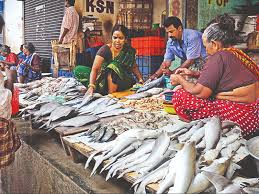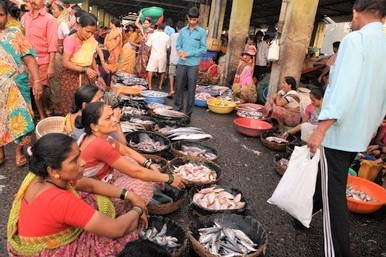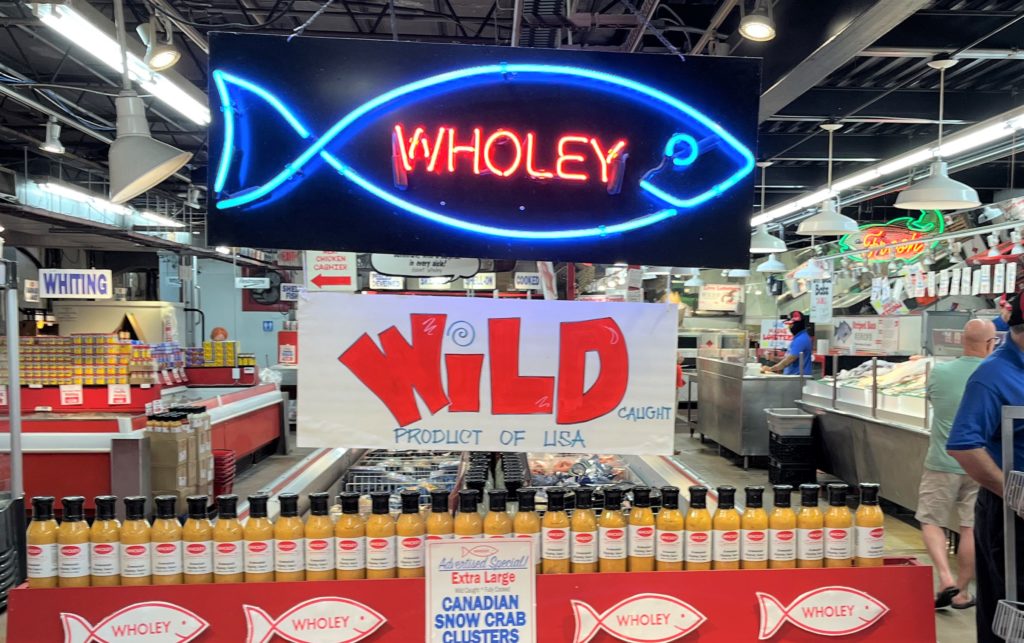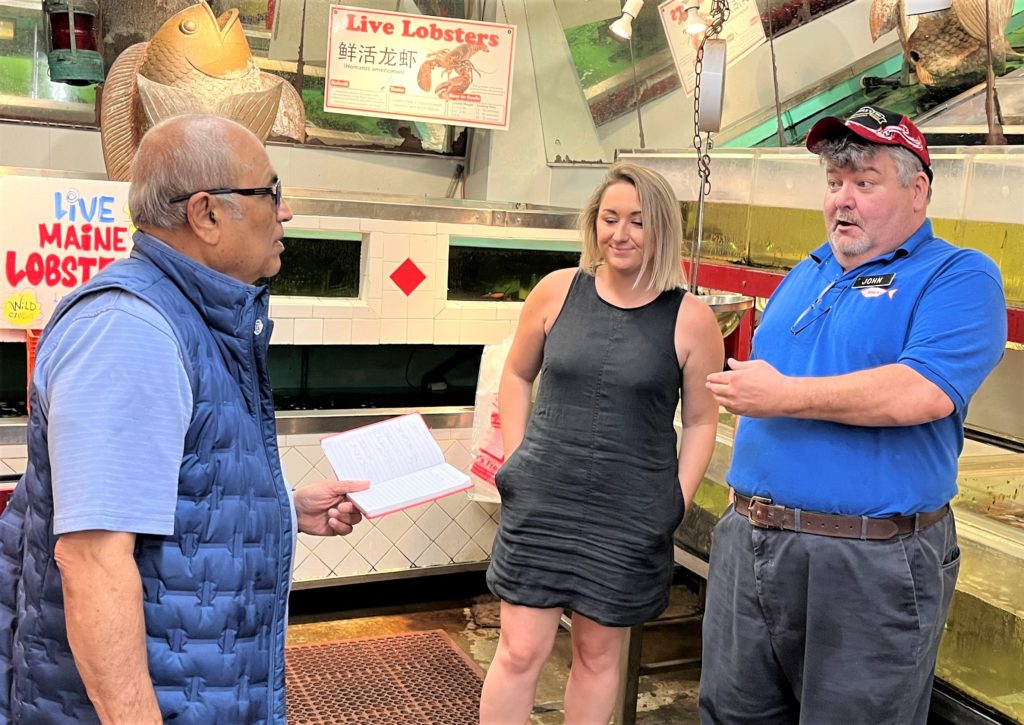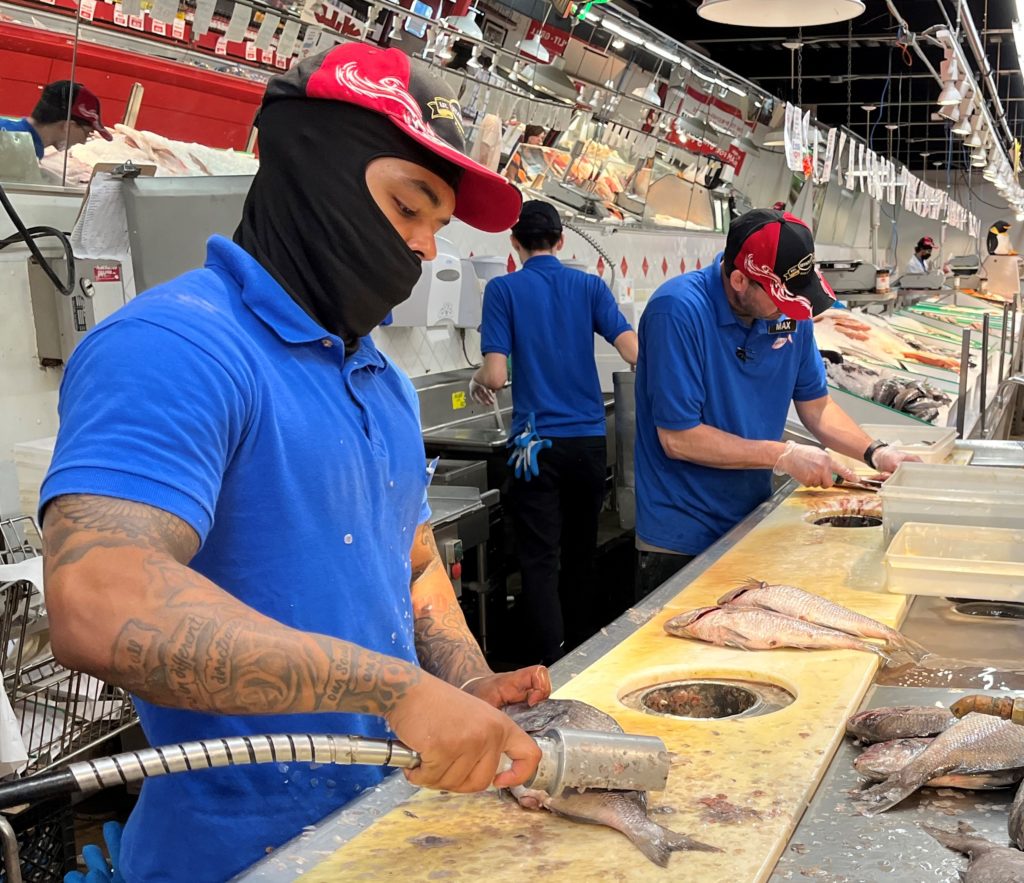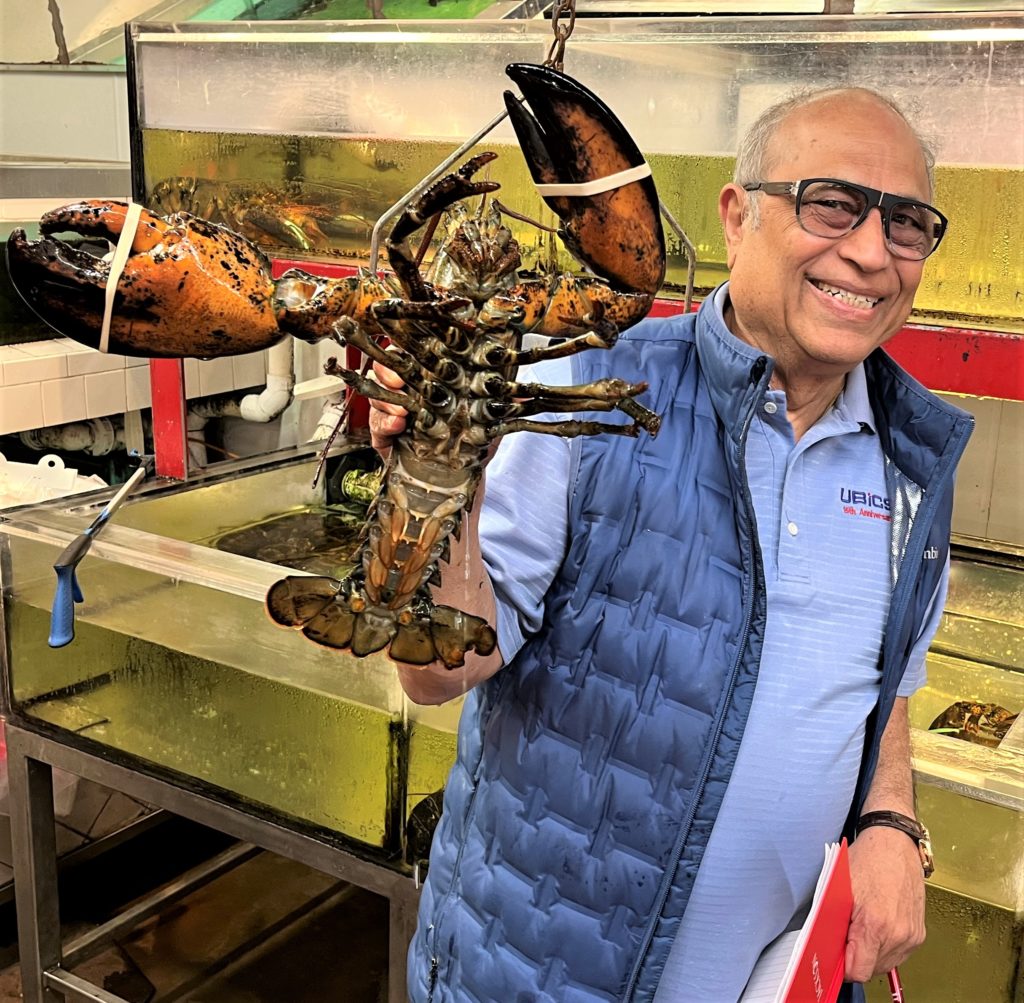By Deepak Kotwal, Squirrel Hill, PA
In early June, Deepak Kotwal, a Maharashtra native and a seafood connoisseur, visited Wholey’s in the Strip District to write about their business and how they cater to the seafood lovers in our area. Note: The Kolis (कोळी) are the Marathi fishing community that dominates seafood harvesting and trading in Maharashtra.
When Indians first settled in the Pittsburgh area in the 1960s, pescatarian Indian immigrants from Mumbai and coastal regions of Maharashtra savoring paplet (pomfret,) bombeel (Bombay-duck) and surmai (kingfish), and the macher-jhol-loving Bengalis, whose favorites are hilsa and rohu, and from all over the peninsular and other regions of India were thrilled to “discover” Wholey’s in the Strip District. They are the largest seafood retailer in Southwest Pennsylvania. Local supermarkets then did not have much of a seafood section. Until fish-loving Indians in and around Pittsburgh found out about Wholey’s, their options were frozen fish sticks and canned tuna to whet their cravings for seafood.
The word Koli (कोळी) in Marathi refers to the traditional Marathi fishermen community that dominates the seafood harvesting and trading business in Maharashtra. My childhood memories include shopping for fish and price-haggling, mostly unsuccessfully, with the kolanīs (कोळणी), the kolī women who managed the retail sales. Their men were on the seas harvesting their catches or getting ready for their next fishing expedition. My daughters’ childhood memories here include going to Wholey’s and holding a slippery smelt in each hand.
Besides ethnic identity, religion, language and clothing, food is an important marker of one’s cultural identity. The late Anthony Bourdain, the famed chef, author, and TV culinary travel host, showed through his TV shows, how to understand cultures through their food.
Here in the US, a land of immigrants, by necessity, new arrivals quickly adapt to the morés of the land to blend in. They switch to local clothing. Their children lose proficiency in their mother tongues in one or two generations. But they continue their culinary traditions passing them on to their children. Childhood food and taste memory is a powerful force.
There is a perception outside India that most Indians are vegetarians. But with its 7,000-plus kilometer coastlines and 400-plus rivers with over 12,000 miles of rivers and countless ponds and lakes, it is natural that seafood is a major part of the Indian diet. There are many references in old Sanskrit and Tamil literature to all types of fish and other aquatic creatures and fishermen communities. In 2000-plus year-old Tamil classics, neithal (ெநய்தல்) is the term for seashores, having unique landscape features, human settlement and activities. Here is a website listing the Indian names for a variety of different fish types: www.tinyurl.com/Fish-names-in-Indian-Languages As an aside, in India, Bengali brahmins and Saraswat brahmins in Maharashtra are seafood connoisseurs. Why some brahmins are vegetarians and others are not is a topic for another article.
Recently, I visited Wholey’s in the Strip District to inform readers of a whole range of seafood items at the store. I spoke to John McNally, a purchasing and marketing veteran with Wholey’s, and Muriel Maze, who joined the Wholey’s recently, to learn more.
In 1912, Robert L. Wholey, from an Irish immigrant family in McKees Rocks started a food distribution company dealing with poultry, meats, sausages, and coffee. His son Robert C. Wholey in 1948, after returning from his military service in WW-II, started a live chicken store in what was then known as “Diamond Market” in downtown Pittsburgh.
In 1959, the Diamond Market was converted to the current up-scale Market Square, forcing their poultry and meat-related business to move to the Strip District. It was a difficult business decision since theirs would be the first retail food store among all the wholesale shops there. It is a truism that successful businesspeople listen to their customers. Around 1960, a customer who had gone to the Chesapeake Bay area came to Mr. Robert Wholey with a large catch of crabs and asked whether the Wholey’s would put them up for sale in his store; they did. Sensing an opportunity, Wholey’s added a fresh seafood section. The rest, as they say, is history. Today, Wholey’s sources their seafood from all over the world. They even have a cooked food section as well, the most popular item being their fish sandwich.
The Wholey’s has a significant customer base from among the people of Indian origin living in this metro area. John explained that Indian customers like to buy the whole fish and have it cleaned by the store’s skilled staff. Fish cleaning requires special skills and there is in-store training for the job, which commands better pay, and has a much lower turnover rate. We chatted with Mr. Yum Duong, a fish cleaning specialist with the Wholey’s for over 20 years, an immigrant from Vietnam. He is well tuned into how to prepare fish steaks, bone-in, for the Indian market.
The fish types popular among Indians are bronzini, blue fish, sea bass and catfish among others. Also popular are butterfish, a small fish that is cooked whole. Pompano and flounder remind us of paaplet (pomfret.)
The local American population sticks to boneless fillets, as most do not know how to cook and eat a whole bone-in fish. Indian immigrants who learnt to eat fish in India know that bone-in fish preparations are tastier than boneless fillets.
Raw shrimp sold at Wholey’s, as in most of America, is head-off (that is, with its head cut off). Most of the shrimp’s fat is in its head. So, when the shrimp has its head on, it tends to become mushy. Headless shrimp can retain their original crispness and texture because of the absence of fat and is preferred by Americans.
In the late 1970’s, a few fish-eating friends of ours would order head-on whole shrimp from Louisiana. We woulde pick up the 50-lbs dry-ice-packed Styrofoam box at the airport, and split the huge shipment. For a true fish-lover from India there is nothing more delectable than sucking on a curried shrimp head! I know, I know, some of you, who are used to eat shrimp the American way are probably repulsed by this. But then, food, like beer, you will agree, is an acquired taste!
When I buy a whole flounder at Wholey’s and have it cleaned at the store, I always request the cleaner to check for egg sacks inside. These egg sacks are an Indian delicacy, but routinely thrown out here.
There are those Indian immigrants who were vegetarians back home and have switched to eating fish after coming here. They learnt to eat fish in restaurants, always served as boneless fillets. These Indians generally do not like whole fish prepared bone-in and with Indian curries and spices.
Climate change, increased world demand for seafood and improvements in the mechanized fish harvesting technology have led to overfishing. While per-capita meat consumption shows a downward trend in the developed countries for health reasons, seafood consumption has increased. Naturally, some species are near extinction. Fish-farming may be the savior of some of these species. Given the increased demand for seafood, flagrant violations of international agreements to limit catches are common. The Marine Sustainability Council (MSC) and the National Oceanic and Atmospheric Administration (NOAA) are working to promote sustainable practices. Whole Foods uses a red/yellow/green rating of MSC. John McNally at Wholey’s assured me that their policy is to sell only sustainable species. It is incumbent on all pescatarians to ensure that the seafood they consume meet the level of sustainability.
The fish-loving Indian immigrant community here and Wholey’s have a symbiotic relationship: the former wanting to fulfill their desi cravings of seafood, and the latter, wanting to find a new market segment for expanding their business. The Wholey’s in the Strip District ensures that despite Pittsburgh not being on either coast of this vast country, it is not a gastronomic wasteland in the sphere of seafood delectables. ∎

